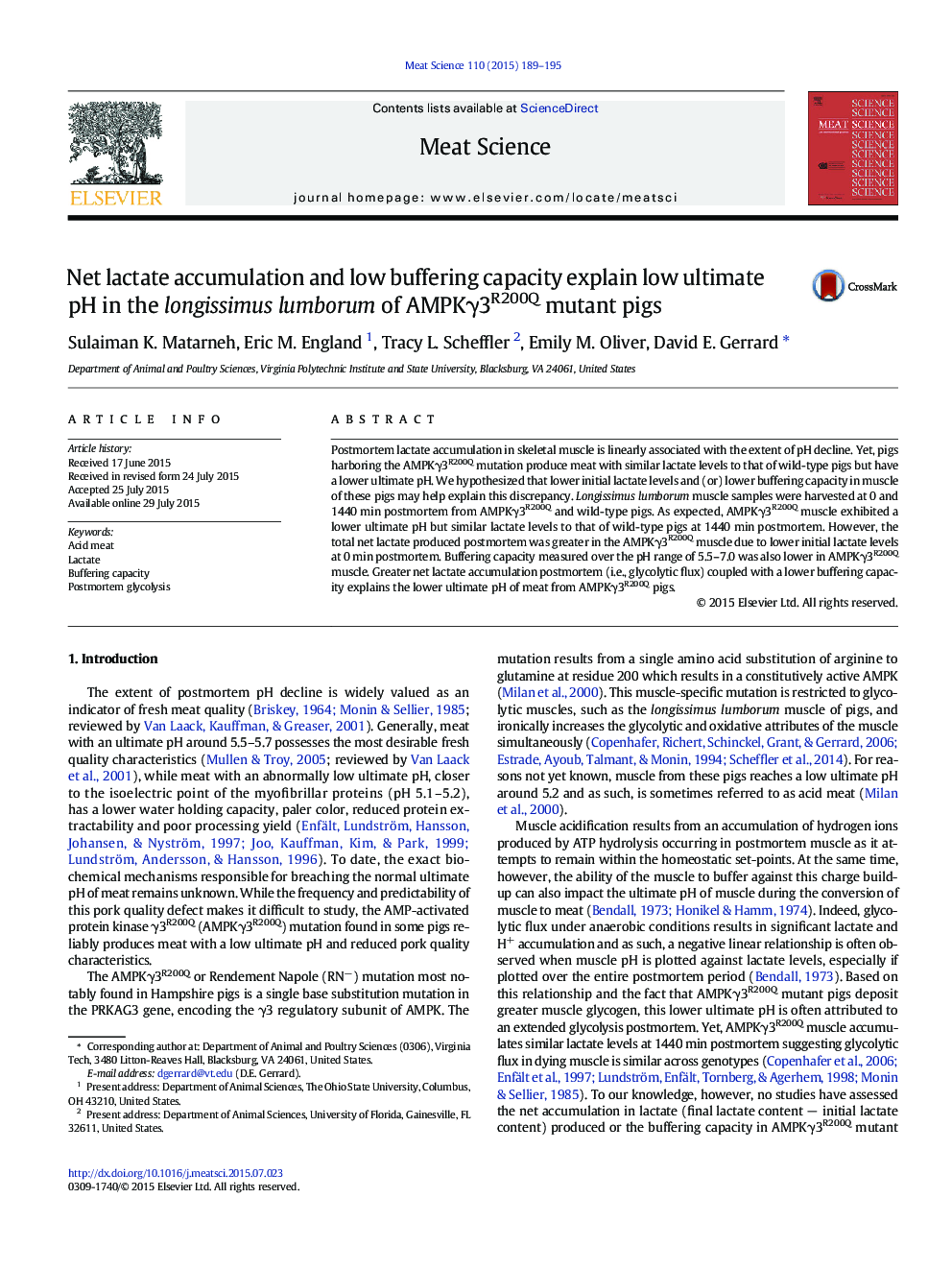| Article ID | Journal | Published Year | Pages | File Type |
|---|---|---|---|---|
| 5791147 | Meat Science | 2015 | 7 Pages |
Postmortem lactate accumulation in skeletal muscle is linearly associated with the extent of pH decline. Yet, pigs harboring the AMPKγ3R200Q mutation produce meat with similar lactate levels to that of wild-type pigs but have a lower ultimate pH. We hypothesized that lower initial lactate levels and (or) lower buffering capacity in muscle of these pigs may help explain this discrepancy. Longissimus lumborum muscle samples were harvested at 0 and 1440 min postmortem from AMPKγ3R200Q and wild-type pigs. As expected, AMPKγ3R200Q muscle exhibited a lower ultimate pH but similar lactate levels to that of wild-type pigs at 1440 min postmortem. However, the total net lactate produced postmortem was greater in the AMPKγ3R200Q muscle due to lower initial lactate levels at 0 min postmortem. Buffering capacity measured over the pH range of 5.5-7.0 was also lower in AMPKγ3R200Q muscle. Greater net lactate accumulation postmortem (i.e., glycolytic flux) coupled with a lower buffering capacity explains the lower ultimate pH of meat from AMPKγ3R200Q pigs.
